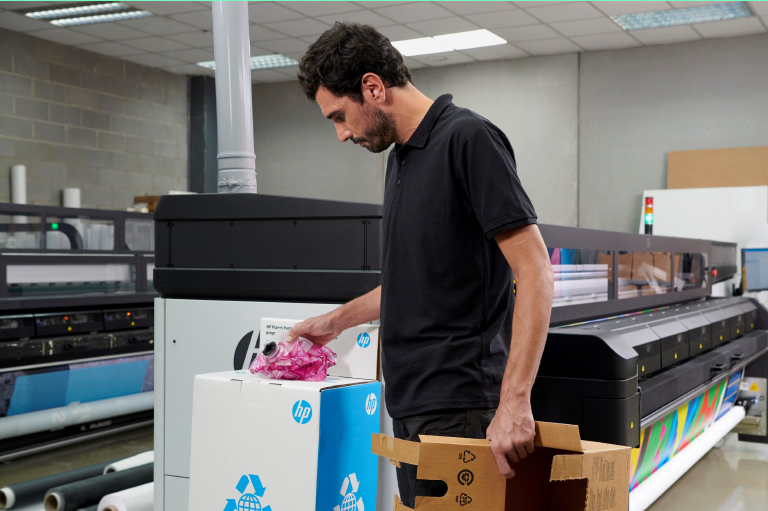Why the print industry needs a sustainable edge

Social responsibility is a hot topic for businesses across the board. This is particularly true for the print industry, with one recent study from HP and C Space finding that 85% of print businesses that operate Latex large format printers are demanding sustainable products and practices.1
Companies of all sizes need to respond quickly, and the important thing is to see it as both a socially responsible endeavour and an economic opportunity. One that can enable print businesses to lower their costs, streamline services through more efficient, circular processes and win new business by delivering sustainable services to even the most eco-conscious customers.
Why the industry needs to pursue social responsibility
Research suggests that print businesses are keen to become more sustainable, with a study by Widthwise2 showing that in 2020 three quarters has achieved environmental accreditations, with 9% working on getting them, In addition, the major environmental focus for that year was to measure and reduce the carbon footprint for almost half of PSPs, with 16% planning to reduce or recycle in-house waste. Mean while, there is an urgent and growing need to find alternatives to materials such as PVC, whose manufacture and disposal are recognised as dangerous to the environment due to the release of harmful chemicals. Along with big brands, the print industry is responding, with many suppliers developing more eco-conscious media.
Making social responsibility profitable for your print business
While the print industry is clearly making significant inroads into sustainable practices, it’s still at the foothills when it comes to making social responsibility an economic advantage to the business. However, there are many ways that print businesses, both large and small, can make environmental practices work for them financially. Among these are reducing energy consumption by using more efficient printers. Or adopting printers that use recycled or recyclable materials and less packaging, and reflect this in their cost. Improving in-house energy generation through solar power may also be worth pursuing. Or using dashboard tools to closely measure metrics in order to identify and drive efficiencies and track ROI so the business can make more informed buying decisions. In addition, developing environmentally friendly print services for eco-conscious customers can be a competitive differentiator. For example, printing facilities can have their sustainability practices certified through accreditations such as the US-based Sustainable Green Printing Partnership (SGP).3
Why it's imperative to improve employee safety
Employee safety is, and should be, an important aspect of social responsibility and something that businesses should make every effort to de-risk. The most common types of print industry accidents are due to manual handling (27%), slips and trips (22%), and machinery (22%). So, as well as making print services more environmentally friendly, PSPs also need to improve employee safety by reducing risk, providing training, and avoiding manual handling where possible in favour of digital and mechanical automation. Where solvents and UV can irritate the skin, leading to dermatitis, businesses should investigate less harmful chemicals and water-based inks, which fundamentally provide healthier print production without trading off performance. Governments have put strict guidelines in place for the printing industry. These regulations are formulated to safeguard the lawful rights and interests of printing operators as well as social and public interests. Furthermore, labour organisations and councils across the globe ensure that the legislation passed for worker safety isn’t overlooked. And by safeguarding employees and developing a protective and healthy environment, PSPs will increase staff safety, satisfaction, and retention, which will ultimately benefit the business as a whole.
Rising to the challenge of change
Print businesses are under pressure to change. But they have proven themselves resilient over recent years: able to adapt to the market, transform digitally, and adopt sustainable practices. The next few years will be critical in continuing the good work that’s already been done in order to create a bright future anchored in environmental, societal, and economic sustainability.










